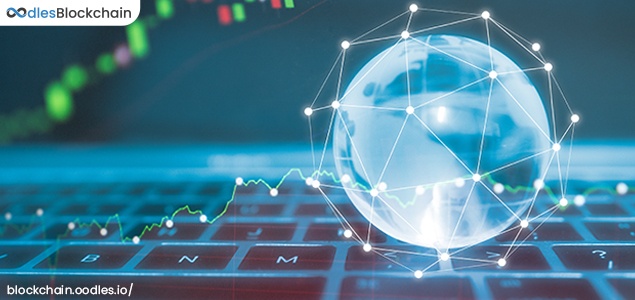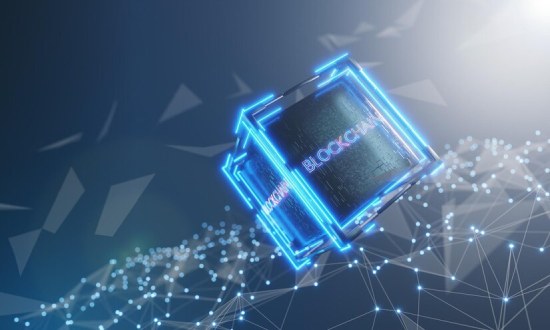-
Decentralized peer-to-peer (P2P) exchanges have revolutionized the cryptocurrency exchange development space by eliminating intermediaries and empowering users to trade directly with one another. Unlike centralized exchanges, which rely on a central authority to manage users' funds and orders, decentralized P2P platforms provide a trustless environment where traders can maintain control over their assets, reduce counterparty risk, and enjoy enhanced privacy.
In this article, we will explore the key insights behind decentralized P2P exchange development, including core features, best practices, and security considerations that developers should keep in mind.
Understanding Decentralized P2P Exchanges
A decentralized P2P exchange is a platform where users trade cryptocurrencies (and sometimes other digital assets) directly with each other without relying on a centralized authority. Transactions are recorded on a blockchain, which ensures immutability and transparency.
Elimination of Intermediaries
Traditional exchanges act as custodians of users' funds, creating vulnerabilities and central points of failure. P2P exchanges remove intermediaries, allowing users to interact directly, reducing risks like hacking or mismanagement of funds.
Enhanced Privacy
By facilitating direct wallet-to-wallet transactions, decentralized P2P exchanges enable users to maintain a higher degree of privacy. Users only share minimal information necessary to execute trades.
Security and Trust
Smart contracts, escrow services, and multi-signature mechanisms ensure the safety of transactions. These features minimize counterparty risk and bolster trust among participants.
Also, Read | Layer 2 Solutions for Crypto Exchange Development
Core Features of Decentralized P2P Exchanges
Non-Custodial Wallets
Non-custodial wallets empower users to maintain full control over their private keys and funds. This significantly reduces risks associated with centralized custody, as hacks or breaches at an exchange level do not compromise user funds directly.
Smart Contract Architecture
Smart contracts automate the execution of trades and escrow. They handle order matching, fund locking, and dispute resolution, eliminating the need for a central authority to verify transactions. Solidity, Vyper, and Rust are common languages used for writing blockchain-based smart contracts (on Ethereum, Solana, etc.).
Order Matching & Atomic Swaps
Many decentralized P2P exchanges offer on-chain order matching or off-chain order books for cost-effectiveness. Atomic swaps allow direct peer-to-peer trades between different cryptocurrencies without needing an intermediary token or centralized exchange.
Escrow and Dispute Resolution
Escrow services lock funds during the transaction process. If any conflict arises, an automated or community-driven dispute mechanism can help resolve the issue. Multi-signature capabilities are often employed to execute transactions only when certain signatures (e.g., buyer, seller, arbitrator) are present.
Liquidity Provision
Liquidity is critical for any exchange. Decentralized P2P exchanges often incentivize market-makers to provide liquidity. Automated Market Makers (AMMs) can also be integrated, though they tend to be more common in Decentralized Finance (DeFi) platforms than in direct P2P solutions.
Also, Explore | Cross-Chain Swaps | Empowering Crypto Exchange Development
Technical Considerations for Building a Decentralized P2P Exchange
Blockchain Selection
The choice of blockchain significantly impacts scalability, transaction fees, and security. Ethereum remains popular due to its maturity and smart contract capabilities. However, alternatives like Binance Smart Chain, Polygon, Solana, or Avalanche offer faster and cheaper transactions.
Consensus Mechanism
Proof-of-Work (PoW), Proof-of-Stake (PoS), and other consensus mechanisms influence network speed, security, and environmental impact. Developers should evaluate each consensus model's throughput and costs when choosing a blockchain protocol.
Smart Contract Development
- Security Audits: Smart contracts require rigorous testing and professional auditing to minimize the risk of vulnerabilities.
- Upgradability: Implementing upgradeability patterns (like proxy contracts) can help fix bugs or add new features without requiring a full redeployment.
- Gas Optimization: Efficient contract coding reduces transaction fees and improves user experience.
Front-End Development
Building a user-friendly interface is essential. Even though the back-end operates with decentralized logic, the front-end should provide traders with clear instructions, simple layouts, and intuitive features.
- Wallet Integration: Seamless connections to popular wallets (e.g., MetaMask, WalletConnect) help users quickly access trading features.
- Real-Time Data: Live price feeds, order book updates, and trade execution status are necessary for an interactive, responsive experience.
Scalability Solutions
High traffic and transaction volumes can lead to congestion and elevated fees on popular blockchains like Ethereum. Layer-2 solutions (e.g., Optimistic Rollups, zk-Rollups) or sidechains can be leveraged to process transactions more efficiently and keep costs manageable.
Also, Discover | The Emergence of Hybrid Crypto Exchange Development
Best Practices for Security and Compliance
Robust Testing & Auditing
Deploying vulnerable smart contracts can undermine an entire platform. Before launch, conduct both internal and external security audits to eliminate exploitable code. Penetration testing should be performed regularly.
Regulatory Adherence
While decentralized exchanges are often less regulated than centralized ones, developers should stay informed of jurisdictional regulations and take steps to remain compliant with Anti-Money Laundering (AML) and Know Your Customer (KYC) requirements, where applicable.
Decentralized Governance
Community governance through mechanisms like decentralized autonomous organizations (DAOs) can enhance user trust. Allowing token holders or stakeholders to vote on platform upgrades, fee structures, and policies fosters transparency.
Fail-Safe Mechanisms
Incorporate contingency plans for unforeseen technical or security failures. Multi-signature admin keys, emergency stop functions (circuit breakers), and relevant fail-safes can mitigate damage from large-scale exploits or system malfunctions.
Also, Check | P2P Crypto Exchange Development | The Future of Digital Trading
Advantages and Challenges
Advantages
- Greater Control: Users retain custody of their funds, significantly reducing counterparty risk.
- Privacy: Minimized personal data sharing.
- Global Accessibility: People worldwide can participate as long as they have internet access and a compatible wallet.
Challenges
- Limited Liquidity: New P2P platforms may struggle to attract sufficient liquidity initially.
- User Experience: Decentralized platforms are sometimes less user-friendly, requiring improvements in UI/UX.
- Regulatory Ambiguity: Evolving global regulations can affect platform operations and user access.
Future Outlook
As blockchain technology matures, decentralized P2P exchanges are likely to see increased adoption. Innovations like cross-chain swaps, layer-2 solutions, and decentralized identity (DID) systems will further streamline these platforms, making them more secure, scalable, and appealing to a broader user base. Moreover, as regulatory frameworks evolve, decentralized exchanges might incorporate more robust compliance measures while maintaining their core ethos of autonomy and transparency.
You may also like | Must-Have Features for a Unique Crypto Exchange Development
Frequently Asked Questions
Q: How does a decentralized P2P exchange differ from a centralized exchange?
A: A decentralized P2P exchange facilitates direct transactions between users without holding custody of funds, whereas a centralized exchange acts as a custodian, managing user deposits and executing trades on their behalf. Decentralized platforms rely on smart contracts for security and transparency, while centralized platforms can offer higher liquidity but carry additional custodial risks.
Q: What is the role of smart contracts in P2P exchanges?
A: Smart contracts automate the trading process by executing transactions, managing escrow, and locking funds until all parties meet the specified conditions. This removes the need for a trusted intermediary and ensures each trade follows predefined, tamper-proof rules.
Q: Are decentralized P2P exchanges secure?
A: They can be very secure if properly audited and designed. Since users hold their own private keys, the risk of a single point of failure (like a centralized exchange hack) is significantly reduced. However, vulnerabilities in smart contracts can pose risks, making thorough security audits essential.
Q: Is KYC required on a decentralized P2P exchange?
A: Decentralized platforms generally do not enforce rigid KYC requirements because trades happen directly between users. However, some protocols implement optional or region-specific compliance measures, so regulations can vary depending on jurisdiction and platform design.
Q: How do I ensure liquidity on a P2P exchange?
A: Liquidity can be encouraged through incentive programs such as offering reduced fees or rewards for market makers. Integration with other DeFi services, cross-chain swaps, and building a large user base also helps attract liquidity.
Q: Can I trade fiat currencies on a decentralized P2P exchange?
A: Some decentralized P2P exchanges support fiat-to-crypto transactions through escrow and peer-to-peer interactions. However, this often involves additional KYC processes to prevent fraud, depending on the payment methods used.
Conclusion
Decentralized P2P exchange development merges the best of blockchain technology with the necessity for transparent and secure trading systems. By eliminating intermediaries, enhancing privacy, and providing robust security mechanisms, decentralized P2P exchanges offer a future-forward approach to digital asset trading. As technology continues to advance and regulatory landscapes adapt, these platforms will remain critical drivers in shaping a more open and inclusive global financial ecosystem. If you are planning to build a highly advanced P2P crypto exchange platform, connect with our crypto exchange developers to get started.

Our Offices
INDIA
Emaar Digital Greens, Sector 61,
Gurugram, Haryana
122011.
Welldone Tech Park,
Sector 48, Sohna road,
Gurugram, Haryana
122018.














